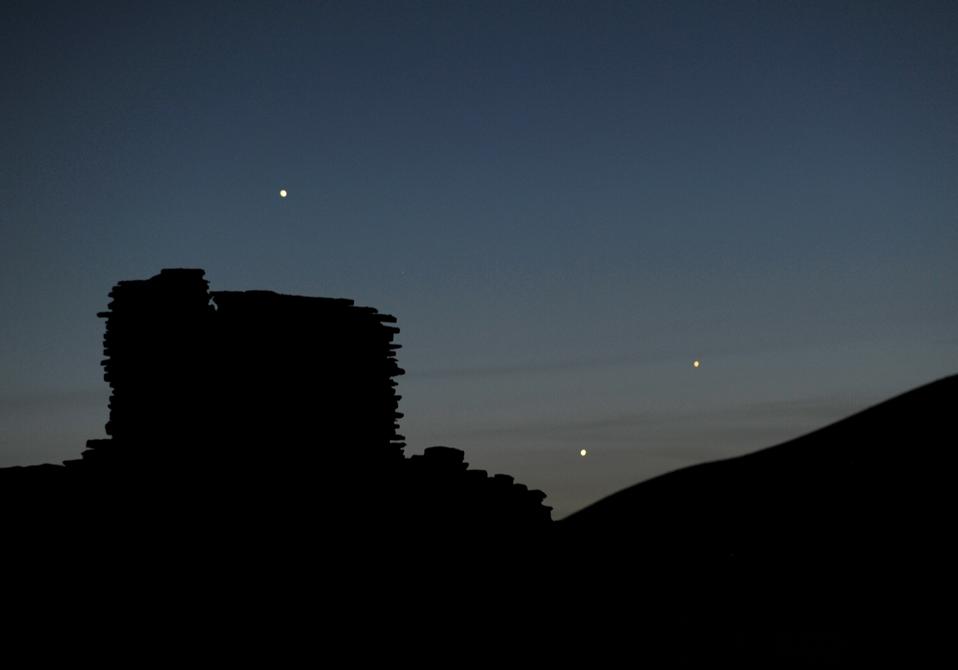Each Monday I pick out the northern hemisphere’s celestial highlights (mid-northern latitudes) for the week ahead, but be sure to check my main feed for more in-depth articles on stargazing, astronomy, eclipses and more.
The Night Sky This Week: July 24-30, 2023
The bright planet Venus has been shining exquisitely in its apparition as the “Evening Star” for most of 2023, but as July draws to a close it begins to sink out of view in twilight. This week, it’s time to take a final look at Earth’s sister planet as it retreats while tiny Mercury rises above it in the post-sunset sky. Venus will return in September before sunrise as the “Morning Star” after a trip through the sun’s glare.
Monday, July 24: Moon And Spica
Tonight in the southwestern sky right after sunset the 41%-lit waxing crescent moon will be just 2º from Spica, the brightest star in the constellation of Virgo and about 250 light-years distant.
Tuesday, July 25: First Quarter Moon
Tonight its First Quarter Moon, which is the point of the month when the Moon appears half-lit as seen from Earth. It’s also when the night skies begin to get so brightly-lit by moonlight than stargazing is more difficult and less impressive. Don’t plan a stargazing trip to a dark sky this week—or next! A full Moon is coming … but tonight is a great time to put a pair of binoculars on craters on the terminator—the line between light and dark on the lunar surface.
Tuesday-Thursday, July 25-27: Venus Meets Mercury
In the west in twilight this week you will be able to see the two inner planets from Earth, a sinking Venus and a rising Mercury, just 5° apart from each other as they trade places. Look low to the western horizon right after sunset.
Friday, July 28: Mercury And Regulus In Conjunction
The “Swift Planet” is hard to see because it’s almost always lost in the glare of the sun. Tonight right after sunset it’s far enough away from our star to be viewed and, as a bonus, it will be just 0.1º from Regulus, the brightest star in the constellation of Leo and about 78 light-years distant. Put some binoculars on the pair for an unusual view.
Saturday/Sunday, July 29/30: Southern Delta Aquariids
Visible from mid-July to mid-August annually, this meteor shower is caused by Earth busting into the dust cloud left in the inner solar system by comet P/2008 Y12. Expect about 25 “shooting stars” per hour in a dark sky during the peak, which is expected to be just before midnight on Saturday for North America. Be outside for 10:00 p.m. Sadly n 89%-lit moon will be around to lessen the meters’ impact until setting about 03:00 a.m.
Object Of The Week: The International Space Station
If you’ve never seen the ISS fly over your head then head to Spot The Station, a service provided by NASA that will email you each morning with the exact time you can see it from where you are. It always appears in the west and disappears in the east taking about five or six minutes to cross. It’s a fabulous sight!
Times and dates given apply to mid-northern latitudes. For the most accurate location-specific information consult online planetariums like Stellarium and The Sky Live. Check planet-rise/planet-set, sunrise/sunset and moonrise/moonset times for where you are.
Wishing you clear skies and wide eyes.

